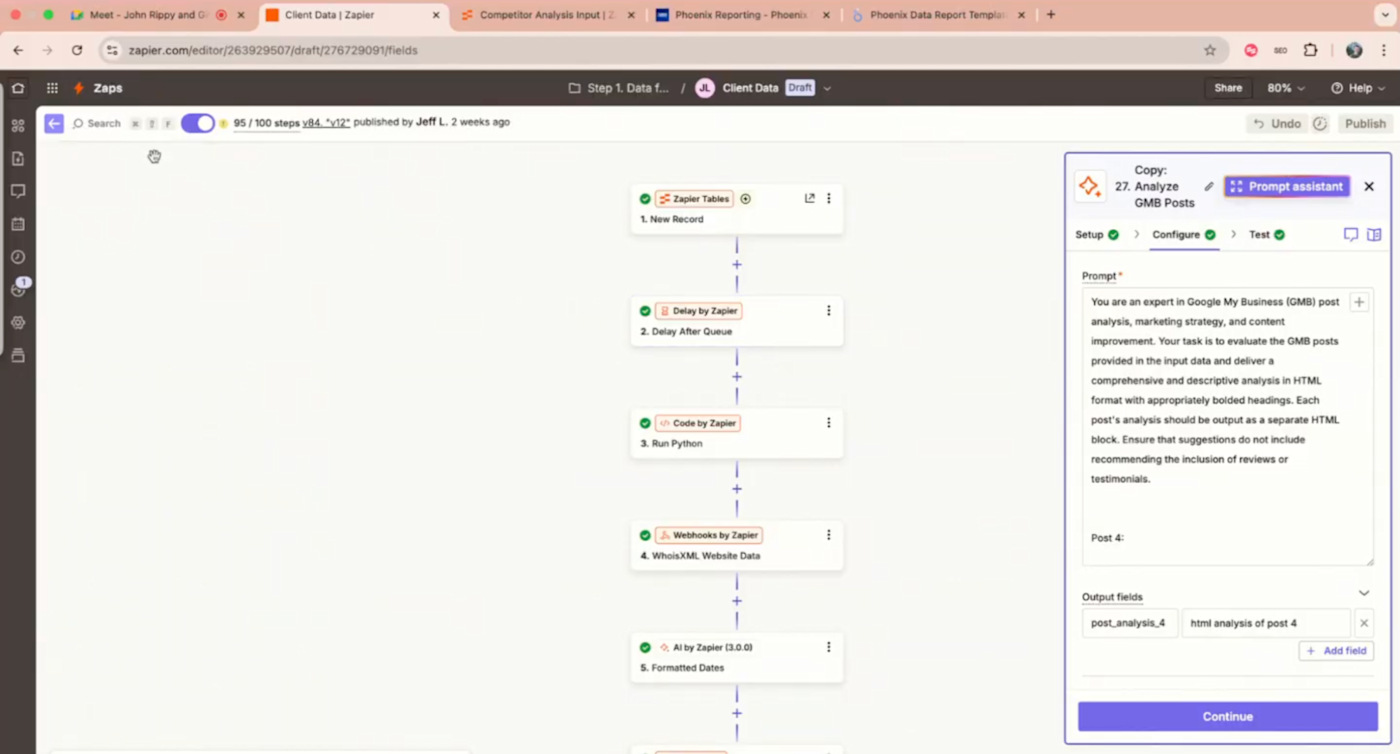When John Rippy, Chief Technology Officer of Drive Social Media, talks about growing a small business today, he doesn’t start with digital ad metrics. Instead, he describes a moment: someone scrolls through Instagram and sees an ad for a local boutique. A few days later, they rip their favorite jeans and vaguely recall that ad, though not the store’s name. That kind of moment, the fuzzy connection that leads to a real-world visit, is what Drive Social Media aims to influence.
“You’re not going back to Instagram to find that ad,” John said. “You’re Googling it. Pulling it up on your GPS. Walking in the door. That’s what we’re trying to capture, the whole customer journey.”
Drive Social Media helps small and mid-sized businesses connect with real customers online and off. From lead generation and customer retention to reporting and strategic planning, their work is built around a simple goal: use data to move faster and smarter.
But growing that vision came with growing pains. Their internal systems required frequent developer support, slowing down experimentation and reporting. “We needed a way to move faster,” John explains, “and to let non-technical teams build without always needing dev.”
That’s when they turned to Zapier. What began as a prototyping tool quickly became something more. Zapier now powers automated reports, streamlined workflows, and AI-driven systems that help Drive Social Media deliver value across departments.
Drive Social Media’s results, by the numbers:
-
95-step Zap automates multi-layer sales reporting
-
3x faster website content creation using AI-generated drafts
-
Reduced web dev time from four weeks to two for new projects
-
Enabled a 282-person company to scale without expanding engineering
Building Phoenix, an AI-powered sales engine
One of Drive Social Media’s most powerful internal systems is Project Phoenix, a 95-step AI-enabled sales intelligence platform designed to help the sales team pitch more effectively and close deals faster.
“Phoenix started as a conversation with ChatGPT,” says Jeff Lang, Drive’s Director of IT. “Our CEO talked through a new sales pitch idea with AI. Then we took that conversation and turned it into a workflow. The whole thing lives inside Zapier.”
To power this 95-step Zap workflow, Drive Social Media relies on a sophisticated stack of integrations, such as Zapier Tables, AI by Zapier, Code by Zapier, OpenAI’s ChatGPT, Google Sheets, Webhooks, Paths by Zapier, and Apify. Each plays a key role in streamlining data collection, decision logic, and output delivery.
Here’s how Phoenix works:
-
It starts with a simple form where users enter a business name, URL, and location.
-
Zapier pulls data from a variety of APIs, including SEMrush, Ahrefs, Google, and WHOIS.
-
AI analyzes the users’ SEO performance, brand presence, online reviews, ad campaigns, and even image relevance on local listings.
-
The workflow then generates a comprehensive report inside Looker Studio, complete with industry benchmarks, competitor breakdowns, and tailored recommendations.
“It’s like a pre-sales consultant in a box,” Jeff said. “We give our salespeople insights they couldn’t get otherwise. And it’s automated, so we can scale it across every lead.”
The results? Phoenix has already reduced prep time from hours to minutes. And as it’s rolled out across Drive’s offices, the sales team is seeing stronger conversion rates and a more compelling pitch.

Understanding and outmaneuvering competitors
Phoenix doesn’t just help Drive understand a lead; it helps their clients understand how they stack up. Using AI and automation, here’s how it works:
-
Phoenix queries Google Maps to pull the exact location coordinates of the client’s address.
-
Zapier then sends those coordinates to Google to search for high-ranking businesses using top keywords in the client’s industry.
-
A Python-based script filters out large national directories (like Yelp or Angi), keeping the results focused on small business competitors.
-
From there, Phoenix identifies the top five local competitors and runs the same deep-dive analysis on each: SEO, PPC, meta ads, Google Business profiles, and reviews.
-
AI models analyze these competitor ads, blog content, and posts and then generate recommendations on how to outperform them.
If a competitor is outranking the client on SEO, Phoenix will auto-generate a 1,500-word blog post using their top keywords. If a competitor is running high-performing ads, the system generates multiple ad copy suggestions to compete directly.
It’s like giving our team—and our clients—a playbook to win their market. Once you see your performance next to a competitor’s, the value is crystal clear.
Jeff Lang, Drive Social Media’s Director of IT
Scaling without slowing down
Behind the scenes, Drive faced a different challenge: maintaining a custom-built integration platform to connect CRMs, POS systems, and ad tools. It worked until it didn’t. Every update required engineering support, slowing down the entire business.
“We needed to move faster,” John explains. “What worked before was now slowing us down.”
Zapier became their foundation, enabling non-technical teams to build and test without waiting on development. Engineers are free to focus on more strategic work, and the company can scale without adding overhead.
Drive is also experimenting with AI agents to summarize meetings, prep sales call responses, and answer internal questions using company knowledge, without needing new infrastructure.
It’s not just about automating tasks. It’s about giving every team the tools to solve problems quickly. That’s how we stay ahead and keep delivering for our clients.
John Rippy, CTO of Drive Social Media
About Drive Social Media:
-
Company size: 282 employees
-
Industry: Digital Marketing & Advertising
-
Location: St. Louis, Missouri